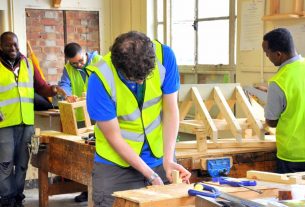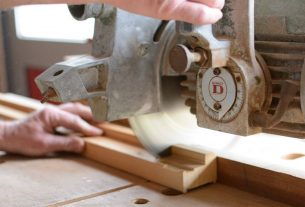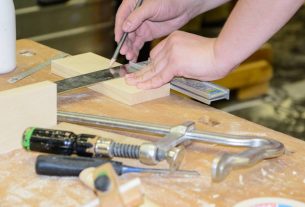Carpenters are skilled people in crafts making who perform carpentry. Carpentry involves a wide range of woodworking. Constructing may include woodworking, buildings, furniture, and other objects made out of wood. Entering this profession needs to be informed of the career basics of carpentry.
Of course, knowledge of the chosen profession is important. Passion is not enough to select a field, it is also important to know the nature and necessities a career you’re interested in requires.
Due to intense physical and manual labor this career requires, most of the carpenters are male. Almost 98.5 % of carpenters are male, making it the fourth most dominated occupation in the United States.
There are about 1.2 million carpentry jobs in 2002. Most of them are contractors who build or repair buildings. Other carpenters work for manufacturing firms, government agencies, retail stores, and schools. About 30 percent of carpenters are self-employed.
There are different types of carpenters. Knowing each type of occupation description may help future carpenters to decide on what field to specialize in. The following are the different types of carpentry jobs:
– Mayster – involved in rough carpentry; includes framing, formwork, roofing and other structural or large-scale work that is not necessarily polished in appearance.
– Joister- involved in putting floor joists. Floor joists are horizontal boards that provide the floor strength in holding the weight.
– Finish carpenter- involved in finish carpentry which is cabinetry, furniture making, fine woodworking, model building, instrument making, parquetry, and other carpentry that require minimal margin of error.
– Trim carpenter- involved in molding and trim like door and window casings, mantle, baseboard, and ornamental work.
– Cabinetmaker – involved in cabinet, wardrobe, dressers, storage chests and other furniture making which function is for storage
– Ship’s carpenter- involved in shipbuilding, maintenance and repair, and carpentry specific to nautical needs.
– Scenic carpenter – involved in scenery and set production for films, television, and theatre
– Framer- involved in building skeletal structures or frameworks of buildings.
– Roofer- involved and specialized in roof construction especially on rafters, beams, and trusses
– Millwrights – involved primarily in metal and with machinery and equipment requiring precision
– Piledrivers – involved in the installation of heavy timbers requiring the use of cranes and the skill of rigging
– Plasterer – mix and apply cement and gypsum-based wet plaster to provide a fire-resistant finish to internal surfaces such as walls and ceilings, etc
To gather much knowledge in their chosen profession, carpenters learn their trade through on the job training, formal training programs, vocational education or employer training and apprenticeships. As early as high school, carpentry is already being taught in school trough courses like carpentry, shop, drawing, and math.
Apprenticeships combine on the job training and classroom work. Applicants for an apprenticeship are required to be at least 18 years old and pass an exam to see if they have the skills to become a carpenter. The length of the program is usually 3 to 4 years. Starting carpenters learn under the supervision of more experienced practitioners.
Aside from laborious and arduous tasks a carpenter does, carpentry jobs also require or engage in the following tasks:
– Reading blueprints and/or getting instructions from a supervisor
– Doing the layout including selecting materials, method or work and measuring and marking materials to avoid costly mistakes
– Cutting and shaping materials and joining them together
– Checking completed units to be sure they are level, square, plumb and the right shape, size and location
Knowing the career basics of carpentry, of course, makes a soon-to-be-carpenter groomed for taking the necessary steps needed to become one.





